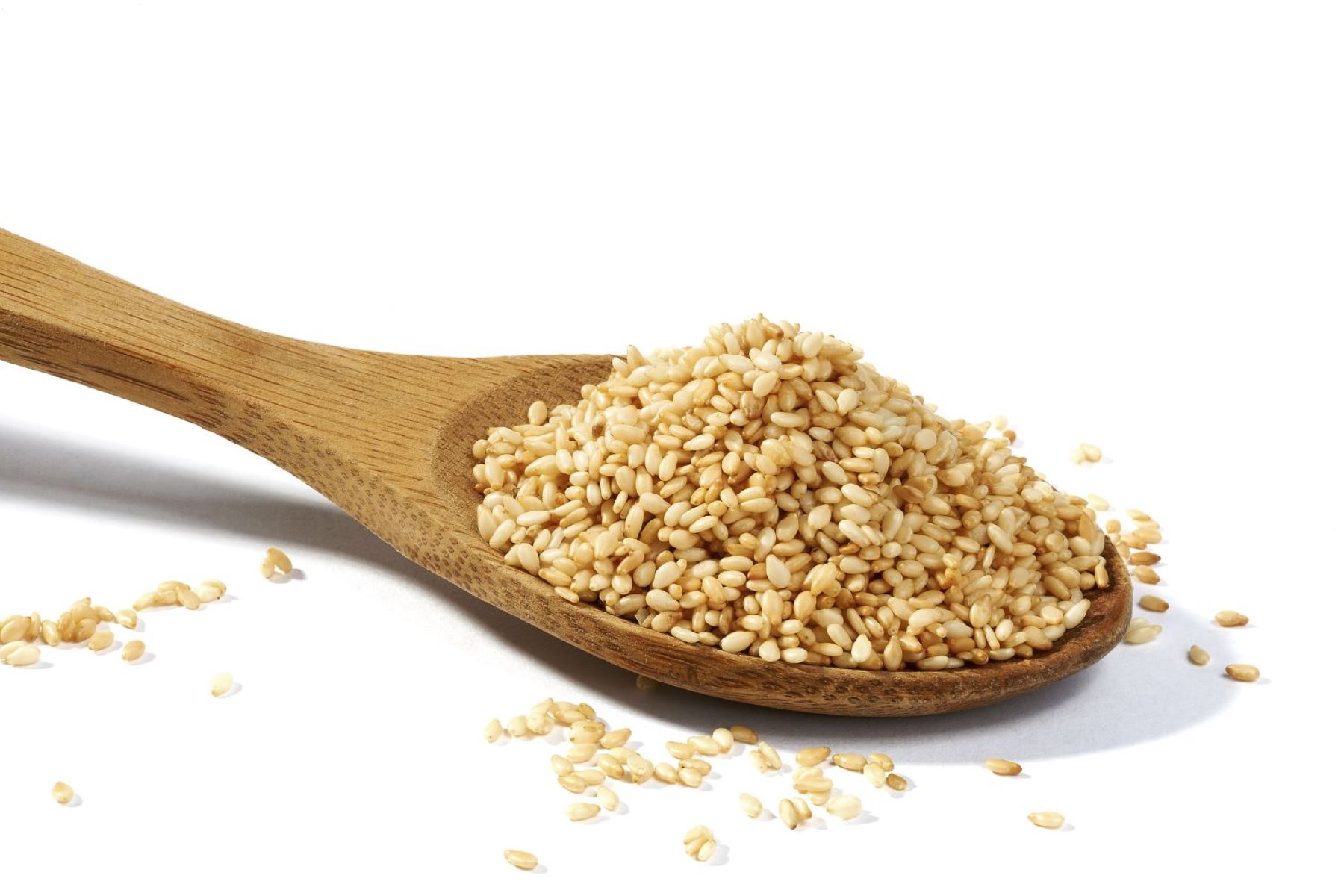Home>Furniture & Design>Interior Design Trends>How Many Carbs In A Glass Of Prosecco


Interior Design Trends
How Many Carbs In A Glass Of Prosecco
Published: February 7, 2024
Discover the latest interior design trends and tips for incorporating them into your home. Stay updated with the best interior design ideas and inspiration. Explore now!
(Many of the links in this article redirect to a specific reviewed product. Your purchase of these products through affiliate links helps to generate commission for Storables.com, at no extra cost. Learn more)
Introduction
Prosecco, a beloved Italian sparkling wine, has gained immense popularity in recent years, captivating the palates of wine enthusiasts and casual drinkers alike. Its effervescence, crispness, and delightful flavors make it a go-to choice for celebrations, social gatherings, and even casual indulgences. However, amidst the growing interest in health-conscious consumption, questions about the nutritional aspects of Prosecco, particularly its carbohydrate content, have emerged.
As the demand for low-carb and keto-friendly options continues to rise, understanding the carbohydrate content of Prosecco has become increasingly important for many individuals. Whether you're savoring a glass of Prosecco at a festive event or simply unwinding after a long day, being mindful of its carbohydrate content can help you make informed choices that align with your dietary preferences and health goals.
In this comprehensive exploration, we delve into the world of Prosecco, uncovering the nuances of its carbohydrate composition and shedding light on the factors that influence its nutritional profile. By gaining a deeper understanding of the carbohydrates in Prosecco, you can approach your enjoyment of this beloved sparkling wine with a newfound awareness, allowing you to savor each sip with confidence and knowledge. Let's embark on this enlightening journey to unravel the mysteries of carbohydrates in Prosecco and empower ourselves with valuable insights into this effervescent delight.
Key Takeaways:
- Prosecco is a low-carb sparkling wine, with about 2 grams of carbs per 5-ounce serving. It’s a great choice for those watching their carb intake while still enjoying a delightful glass of bubbly.
- Factors like grape ripeness and fermentation process influence Prosecco’s carb content. Enjoying it in moderation can add a touch of celebration and refreshment to special moments, while being mindful of carb intake.
Read more: How Many Carbs Are In A Glass Of Milk
What is Prosecco?
Prosecco, a sparkling wine hailing from the Veneto region of Italy, has garnered widespread acclaim for its refreshing and effervescent characteristics. Crafted primarily from the Glera grape, Prosecco is celebrated for its lively bubbles, delicate fruity notes, and vibrant acidity, making it a delightful choice for various occasions.
This beloved Italian wine is produced using the Charmat method, wherein the secondary fermentation, responsible for creating its signature effervescence, occurs in stainless steel tanks. This process preserves the wine's fresh and fruity flavors, resulting in a crisp and lively palate that captivates the senses.
Prosecco is available in different styles, ranging from the classic "Brut" with its dry profile to the slightly sweeter "Extra Dry" and "Dry" variations. Each style offers a unique sensory experience, allowing enthusiasts to explore a spectrum of flavors and find the perfect match for their preferences.
Renowned for its versatility, Prosecco is not only enjoyed on its own but also serves as a key ingredient in popular cocktails such as the classic Bellini and the refreshing Aperol Spritz. Its ability to effortlessly complement a myriad of flavors makes it a cherished choice for pairing with an array of cuisines, from light salads and seafood to delectable desserts.
With its rich heritage and modern appeal, Prosecco has transcended cultural boundaries, becoming a symbol of conviviality and celebration around the world. Whether it's a casual gathering with friends, a festive toast, or a moment of personal indulgence, Prosecco continues to enchant enthusiasts with its effervescent charm and delightful flavors, making it a beloved staple in the world of sparkling wines.
Carbohydrates in Prosecco
When it comes to the carbohydrate content of Prosecco, it's essential to understand that this sparkling wine is generally low in carbs, making it a favorable choice for those mindful of their carbohydrate intake. Typically, a standard serving of Prosecco, which is about 5 ounces, contains approximately 2 grams of carbohydrates. This modest carbohydrate content positions Prosecco as a relatively carb-friendly option, especially when compared to other alcoholic beverages.
The low carbohydrate profile of Prosecco can be attributed to the winemaking process and the natural characteristics of the Glera grape. During the fermentation of Prosecco, the yeast consumes much of the grape's natural sugars, resulting in a wine that is lighter in residual sugar and, consequently, lower in carbohydrates. This process contributes to the refreshing and dry nature of Prosecco, allowing enthusiasts to savor its effervescence without a significant impact on their carbohydrate intake.
It's important to note that the carbohydrate content of Prosecco may vary slightly depending on the specific style and brand. While the classic "Brut" Prosecco tends to have the lowest sugar content and, consequently, the lowest carbohydrate count, other styles such as "Extra Dry" and "Dry" may contain slightly higher carbohydrate levels due to their residual sugar content. However, even these variations typically remain within the low-carb spectrum, making Prosecco a favorable choice for individuals adhering to low-carbohydrate diets.
Furthermore, the serving size of Prosecco plays a crucial role in determining the overall carbohydrate intake. Being mindful of portion sizes and consuming Prosecco in moderation can help individuals manage their carbohydrate consumption while enjoying this beloved sparkling wine. By savoring Prosecco in recommended serving sizes, enthusiasts can relish its delightful flavors and effervescence without compromising their dietary preferences or health-conscious choices.
In essence, the carbohydrate content of Prosecco aligns with the preferences of individuals seeking low-carb options, offering a delightful and versatile choice for those looking to indulge in a glass of sparkling wine without a significant impact on their carbohydrate intake. With its modest carbohydrate profile and captivating characteristics, Prosecco continues to enchant enthusiasts, providing a delightful option for moments of celebration, relaxation, and conviviality.
A standard 5 oz glass of Prosecco contains about 1-2 grams of carbs. If you’re watching your carb intake, be mindful of mixers or added sugars in cocktails.
Factors Affecting Carbohydrate Content
The carbohydrate content of Prosecco is influenced by several key factors, each contributing to the overall nutritional profile of this beloved sparkling wine. Understanding these factors provides valuable insights into the nuances of Prosecco's carbohydrate composition and empowers enthusiasts to make informed choices aligned with their dietary preferences and health goals.
-
Grape Varietal and Ripeness: The type of grape used in winemaking, particularly the Glera grape for Prosecco, plays a significant role in determining the carbohydrate content. The ripeness of the grapes at the time of harvest impacts their sugar levels, which subsequently influences the potential carbohydrate content in the resulting wine. Winemakers carefully monitor the ripeness of the grapes to achieve the desired balance of flavors while managing the sugar content to maintain Prosecco's characteristic dryness.
-
Fermentation Process: The fermentation process, including the duration and temperature at which it occurs, directly affects the conversion of grape sugars into alcohol and carbon dioxide. This transformation plays a pivotal role in determining the residual sugar and, consequently, the carbohydrate content of Prosecco. The meticulous control of fermentation parameters allows winemakers to craft Prosecco with varying levels of residual sugar, offering a spectrum of styles that cater to diverse preferences.
-
Wine Style and Sweetness Levels: Different styles of Prosecco, such as Brut, Extra Dry, and Dry, exhibit varying levels of sweetness, which directly correlates with their carbohydrate content. The classification of these styles is based on the residual sugar present in the wine, with Brut being the driest and typically lowest in carbohydrates, while Extra Dry and Dry styles may contain slightly higher sugar levels. Understanding these distinctions enables enthusiasts to select Prosecco varieties that align with their dietary considerations.
-
Alcohol Content: While not directly related to carbohydrates, the alcohol content of Prosecco can impact its overall nutritional profile. Wines with higher alcohol content may have a lower residual sugar content, contributing to a potentially lower carbohydrate count. This interplay between alcohol and sugar content underscores the intricate balance that influences the carbohydrate composition of Prosecco.
By considering these factors, individuals can gain a deeper appreciation for the complexities that shape the carbohydrate content of Prosecco. This awareness empowers enthusiasts to make mindful choices, allowing them to savor the effervescence and flavors of Prosecco while aligning with their dietary preferences and health-conscious lifestyles.
Health Considerations
The carbohydrate content of Prosecco holds significance for individuals mindful of their dietary choices and health considerations. With its relatively low carbohydrate profile, Prosecco presents a favorable option for those seeking to manage their carbohydrate intake while indulging in the pleasures of sparkling wine. This aspect is particularly relevant for individuals following low-carb or ketogenic diets, where monitoring carbohydrate consumption is a key component of their nutritional approach.
In addition to its modest carbohydrate content, Prosecco offers certain health-related advantages when enjoyed responsibly. Moderate consumption of wine, including Prosecco, has been associated with potential cardiovascular benefits, attributed to the presence of polyphenols and antioxidants in the wine. These compounds may contribute to supporting heart health and overall well-being when incorporated into a balanced lifestyle.
Furthermore, the effervescence of Prosecco can enhance the sensory experience of consuming this sparkling wine, contributing to a sense of lightness and refreshment. The lively bubbles and crisp acidity of Prosecco can elevate moments of celebration and relaxation, adding a touch of conviviality to social gatherings and personal indulgences.
It is important to note that while Prosecco offers these potential benefits, responsible and mindful consumption is key. Excessive alcohol consumption can have adverse effects on health and well-being, emphasizing the importance of moderation when enjoying Prosecco or any alcoholic beverage.
For individuals with specific health considerations, such as diabetes or other medical conditions that require close monitoring of carbohydrate intake, consulting with a healthcare professional is advisable. Understanding how Prosecco fits into individual dietary plans and health goals can help individuals make informed choices that align with their overall well-being.
In essence, the carbohydrate content of Prosecco, coupled with its potential health-related advantages when consumed in moderation, underscores the multifaceted nature of this beloved sparkling wine. By considering the interplay of carbohydrate content, health considerations, and responsible enjoyment, individuals can approach their experience with Prosecco with a balanced perspective, savoring its delightful attributes while prioritizing their well-being.
Read more: How Many Calories Is A Glass Of Prosecco
Conclusion
In conclusion, the exploration of the carbohydrate content of Prosecco unveils a captivating tapestry of flavors, craftsmanship, and health considerations. With its modest carbohydrate profile and delightful characteristics, Prosecco emerges as a versatile and appealing choice for individuals seeking a low-carb option within the realm of sparkling wines.
The journey through the world of Prosecco has illuminated the intricate factors that influence its carbohydrate content, from the grape varietal and fermentation process to the diverse styles and sweetness levels. This understanding empowers enthusiasts to make informed choices, allowing them to savor the effervescence and flavors of Prosecco while aligning with their dietary preferences and health-conscious lifestyles.
Furthermore, the health considerations associated with Prosecco, when enjoyed responsibly, add a layer of depth to its allure. The potential cardiovascular benefits and the sensory delight offered by Prosecco contribute to its appeal as a beverage that transcends mere indulgence, embodying moments of conviviality, celebration, and relaxation.
As individuals navigate their dietary preferences and health goals, the knowledge of Prosecco's carbohydrate content equips them with the confidence to partake in this beloved sparkling wine, knowing that they can do so while maintaining a mindful approach to their carbohydrate intake.
In essence, Prosecco stands as a testament to the harmonious fusion of tradition and modernity, offering a delightful and low-carb option that enriches moments of connection, joy, and personal indulgence. By embracing the nuances of Prosecco's carbohydrate content and health-related attributes, enthusiasts can embark on a journey of enjoyment and well-being, savoring each effervescent sip with a newfound awareness and appreciation.
In the tapestry of wine culture, Prosecco shines as a sparkling gem, inviting individuals to revel in its charm, celebrate life's moments, and embrace the pleasures of a low-carb libation that transcends boundaries and captivates the senses. With its modest carbohydrate content and myriad virtues, Prosecco continues to enchant, offering a sparkling symphony of flavors and well-being, ensuring that each glass is a celebration of life, connection, and the art of mindful indulgence.
Frequently Asked Questions about How Many Carbs In A Glass Of Prosecco
Was this page helpful?
At Storables.com, we guarantee accurate and reliable information. Our content, validated by Expert Board Contributors, is crafted following stringent Editorial Policies. We're committed to providing you with well-researched, expert-backed insights for all your informational needs.















0 thoughts on “How Many Carbs In A Glass Of Prosecco”